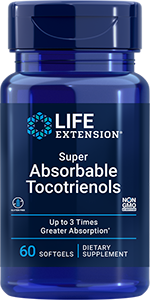| Alzheimer’s disease is characterized by two key abnormalities: amyloid plaques and neurofibrillary tangles. Amyloid plaques are clumps of a protein known as beta-amyloid. These plaques are found in the tissue between nerve cells in the brain and in degenerating pieces of neurons. Genetic factors clearly play a role. The disease runs in families, and several genes have been identified that raise the risk of Alzheimer’s disease (Kasper DL et al 2004). One such abnormality affects a lipid (fat) called apolipoprotein E (apoE). There are three types of apoE. People who have one particular type of apoE (apoE4) are more likely than other people to develop Alzheimer’s disease. Even this knowledge, however, is of limited use because the presence or absence of apoE in any form is not a strong enough indicator to justify using apoE4 as a widespread screening tool. Compelling and growing evidence links inflammation and oxidative stress to Alzheimer’s disease. According to the inflammation theory (discussed in dozens of recent clinical trials), inflammatory cytokines gather at the neurons of people who have Alzheimer's. Other possible causes include high levels of homocysteine in the brain and specific nutrient deficiencies. Although these ideas are still developing, they have opened up exciting new targets for therapy. In clinical studies, the most cutting-edge researchers are turning to therapies such as anti-inflammatory nutrients, antioxidants that reduce oxidative stress, and metal chelating agents (such as green tea) that reduce the levels of free iron in the brain. Folic acid is needed for DNA synthesis and to make S-adenosylmethionine (SAMe). A study of 126 patients, including 30 who had Alzheimer’s disease, found that the levels of folate in cerebrospinal fluid were significantly lower in patients with late-onset Alzheimer’s disease (Serot JM et al 2001). Another longitudinal analysis of people between the ages of 70 and 79 years found that people who had high levels of homocysteine or low levels of folate had impaired cognitive function. | 
Current findings published by news media worldwide on the topics of health and wellness, dietary supplements, diseases such as atherosclerosis, arthritis and stroke, and numerous other subjects of interest to those who wish to live a longer, healthier life are posted each day in Life Extension Daily News. New articles posted seven days a week under the headings of vitamins, nutrition, disease and aging cover a range of subjects, from health tips for the lay person to peer-reviewed medical journal reports. Under Aging, cutting-edge research that improves our understanding of the aging process is revealed, in addition to suggestions for anti-aging supplements as we grow older. The Disease section reports medical breakthroughs as well as alternative therapies for conditions and diseases that affect many of us, such as stroke, atherosclerosis, and arthritis. Articles featured in the Nutrition section offer tips on eating the right foods as well as choosing the best dietary supplements to ensure optimal health and wellness. Items posted under Vitamins provide the latest research findings and practical information on the best vitamins contained in food and dietary supplements, as well as legislative information. https://www.lifeextension.com/news/ |

















